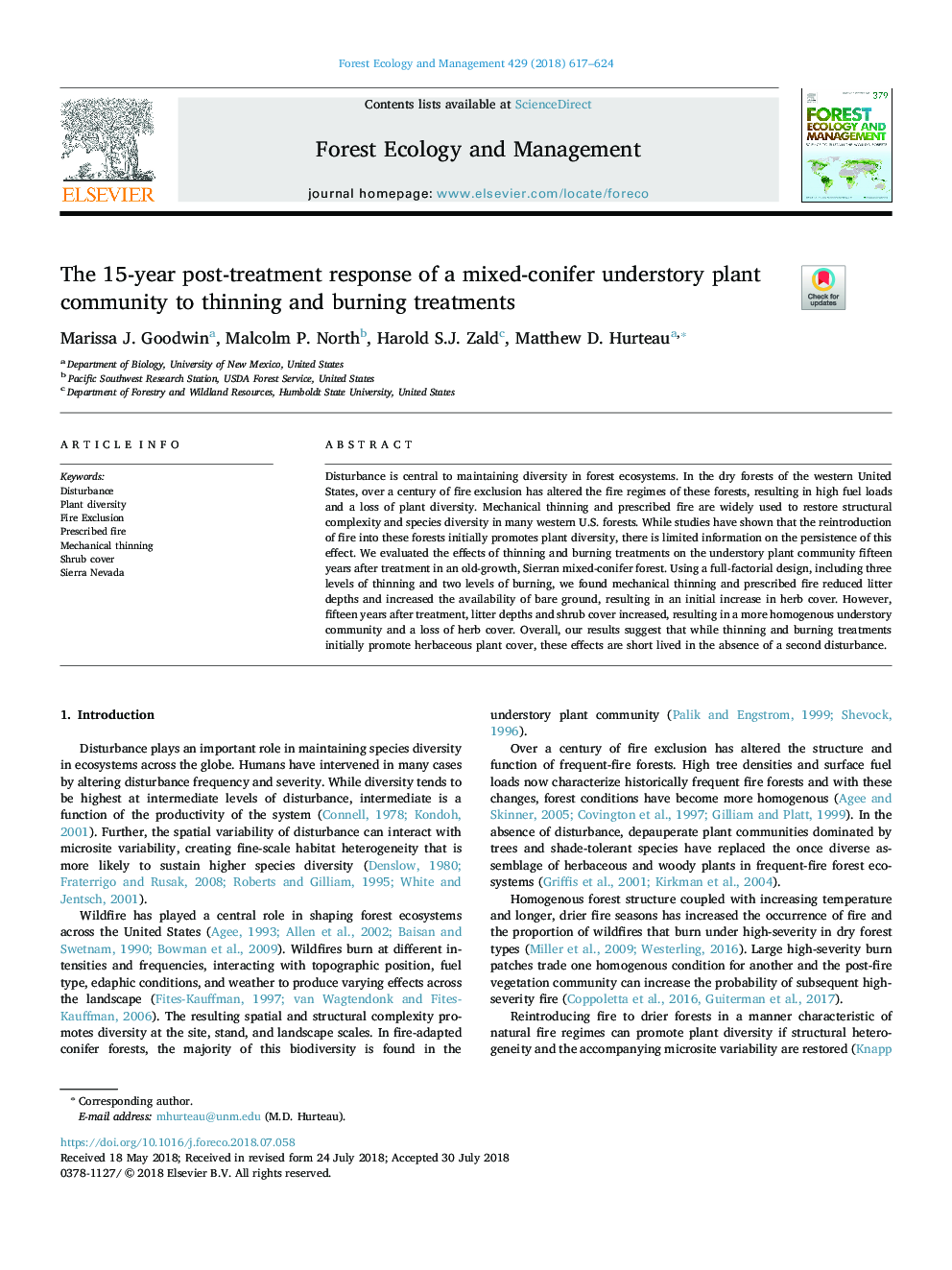| Article ID | Journal | Published Year | Pages | File Type |
|---|---|---|---|---|
| 6541469 | Forest Ecology and Management | 2018 | 8 Pages |
Abstract
Disturbance is central to maintaining diversity in forest ecosystems. In the dry forests of the western United States, over a century of fire exclusion has altered the fire regimes of these forests, resulting in high fuel loads and a loss of plant diversity. Mechanical thinning and prescribed fire are widely used to restore structural complexity and species diversity in many western U.S. forests. While studies have shown that the reintroduction of fire into these forests initially promotes plant diversity, there is limited information on the persistence of this effect. We evaluated the effects of thinning and burning treatments on the understory plant community fifteen years after treatment in an old-growth, Sierran mixed-conifer forest. Using a full-factorial design, including three levels of thinning and two levels of burning, we found mechanical thinning and prescribed fire reduced litter depths and increased the availability of bare ground, resulting in an initial increase in herb cover. However, fifteen years after treatment, litter depths and shrub cover increased, resulting in a more homogenous understory community and a loss of herb cover. Overall, our results suggest that while thinning and burning treatments initially promote herbaceous plant cover, these effects are short lived in the absence of a second disturbance.
Keywords
Related Topics
Life Sciences
Agricultural and Biological Sciences
Ecology, Evolution, Behavior and Systematics
Authors
Marissa J. Goodwin, Malcolm P. North, Harold S.J. Zald, Matthew D. Hurteau,
